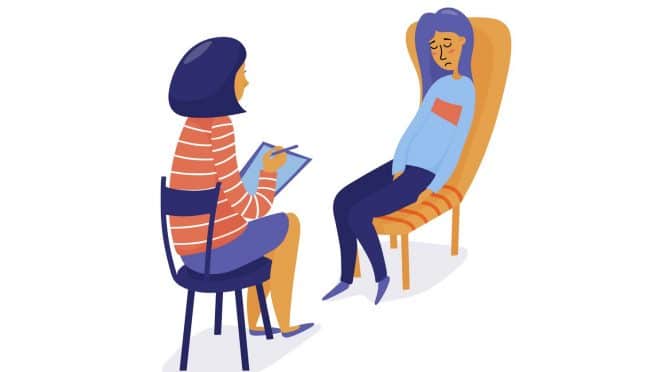How to Select the Best Psychologist in Delhi for Personalized Treatment
How to Select the Best Psychologist in Delhi for Personalized Treatment
Blog Article
Psych Treatment: A Comprehensive Guide to Techniques and Outcomes

Cognitive-Behavioral Treatment
Cognitive-Behavioral Therapy (CBT) is a widely utilized psychotherapeutic approach that focuses on determining and changing useless thinking and actions patterns. Created in the 1960s by Aaron T. Beck, CBT combines behavior and cognitive theories to address various psychological health issues, consisting of anxiety, anxiety, and stress-related conditions. The premise of CBT is that maladaptive ideas add to emotional distress and maladaptive habits. By restructuring these ideas, individuals can accomplish substantial renovations in their emotional wellness and daily functioning.
CBT is defined by its organized, ambitious nature. Therapy normally involves a collaborative process in between the specialist and customer, where details issues are determined, and practical strategies are created to address them. Techniques such as cognitive restructuring, direct exposure treatment, and skill-building exercises are frequently utilized. Cognitive restructuring entails challenging and altering negative idea patterns, while exposure treatment intends to lower anxiety and anxiety through gradual direct exposure to been afraid scenarios or things.
Evidence-based study supports the efficiency of CBT for a vast array of mental problems - Best Psychologist in Delhi. Its emphasis on skill acquisition and self-help strategies encourages customers to continue progression individually after treatment ends. The adaptability and effectiveness of CBT have made it a keystone in contemporary psychotherapeutic technique
Psychodynamic Methods
Rooted in the early concepts of Sigmund Freud, psychodynamic techniques concentrate on exploring the subconscious mind and its impact on actions and emotions. These approaches aim to reveal surprise thoughts and sensations that might be driving maladaptive habits and mental distress. Central to this strategy is the idea of internal problem, typically stemming from unsettled past experiences, particularly those from youth.
Therapists making use of psychodynamic methods use several essential methods, including free association, where people are motivated to speak freely to disclose unconscious product, and desire analysis, which analyzes the concealed material of desires. Furthermore, the expedition of transference and countertransference characteristics within the restorative partnership is crucial. These communications can offer insights right into the patient's internal world and relational patterns.
Psychodynamic therapy is usually longer-term contrasted to other methods, using a deep and thorough understanding of the individual's mind. Research indicates that it can be particularly efficient for complicated mental wellness problems, such as personality disorders and chronic depression. By fostering self-awareness and emotional understanding, psychodynamic treatment looks for to bring unconscious material to awareness, allowing individuals to achieve purposeful and long lasting adjustment in their lives.
Humanistic Strategies
Structure on the foundations laid by psychodynamic approaches, humanistic strategies supply a distinctive point of view concentrated on individual potential and self-actualization. Coming from the mid-20th century, these methods prioritize the fundamental goodness and growth potential of individuals, highlighting an all natural sight of human experience. Secret numbers such as Carl Rogers and Abraham Maslow have dramatically influenced this healing strategy, which incorporates methods like client-centered therapy and Gestalt therapy.
Client-centered treatment, created by Rogers, plays a critical duty in humanistic strategies. It counts on the therapist providing an environment of genuine positive respect, compassion, and harmony. This fosters a secure area for customers to discover their feelings and experiences without judgment, facilitating self-discovery and personal development. The therapist's function is more of a facilitator than an authority, urging clients to harness their internal sources for healing.
Gestalt therapy, an additional important humanistic strategy, highlights present minute understanding and the assimilation of mind and body. By concentrating on the "present moment," clients acquire higher understanding right into their existing emotions and behaviors. Methods such as role-playing and led visualization are frequently employed to assist customers acquire a deeper understanding of themselves, inevitably resulting in boosted self-awareness and gratification.
Integrative Therapies
Integrative treatments represent a synthesis of various healing techniques tailored to fulfill the unique needs of each customer. This strategy acknowledges the complexity of human psychology and the complex nature of mental health and wellness concerns. By incorporating elements from different schools of psychotherapy-- such as cognitive-behavioral treatment (CBT), psychodynamic therapy, and humanistic approaches-- integrative therapies provide a more alternative and versatile therapy paradigm.
Professionals of integrative treatment analyze each customer's specific needs, symptoms, and personal background to create a personalized treatment strategy. This individualized method enhances the potential for healing success by addressing the source of emotional distress and promoting overall well-being. Techniques may include mindfulness exercises, cognitive restructuring, and psychological handling, each picked to target different aspects of the customer's concerns.
Additionally, integrative therapies emphasize the healing partnership, checking out the client-therapist bond as an essential component of efficient treatment. This partnership promotes an encouraging setting where customers feel secure to explore and address their problems. The versatility of integrative treatments makes them appropriate for a broad series of conditions, consisting of anxiousness, clinical depression, injury, and social problems, consequently increasing their applicability and performance in diverse medical setups.

Gauging Treatment Outcomes
Examining the effectiveness of psychiatric therapy is critical for both customers and clinicians to ensure that the treatment is generating the wanted outcomes. To attain this, various techniques and tools are used to determine treatment outcomes methodically. Standardized analysis useful link instruments, such as the Beck Depression Inventory (BDI) and the Generalized Stress And Anxiety Problem 7 (GAD-7), offer quantitative data on signs and symptom severity and modifications gradually.
Along with standard devices, qualitative techniques like client self-reports and clinical interviews supply important understandings right into the personal experiences and regarded progression of clients. On a regular basis scheduled examinations, commonly at the beginning, midpoint, and end of therapy, assistance in tracking the trajectory of improvement or determining areas requiring change.
Outcome dimension is not restricted to symptom reduction; it also incorporates functional improvements in everyday life, such as much better social connections, enhanced work performance, and enhanced overall well-being. Modern advancements in digital health and wellness have actually presented mobile applications and online platforms that help with real-time tracking and comments, even more fine-tuning the evaluation process.
Eventually, an extensive technique to determining therapy outcomes makes sure that healing interventions are efficient, efficient, and customized to meet the individual needs of clients, thus optimizing the overall restorative experience.
Conclusion
Humanistic methods concentrate on personal development and self-actualization, while integrative therapies integrate numerous approaches for tailored treatment strategies. Evaluating look at these guys therapy end results via standardized assessments and qualitative approaches makes sure an extensive understanding of performance, ultimately directing customers toward sustaining psychological health renovations.
From the structured technique of Cognitive-Behavioral Treatment (CBT) to the deep exploration of the unconscious in psychodynamic treatment, each method brings special advantages. Its focus on skill purchase and self-help strategies equips customers to continue progression separately after therapy wraps up (Best Psychologist in Delhi). Key figures such as visit this web-site Carl Rogers and Abraham Maslow have considerably affected this therapeutic method, which incorporates techniques like client-centered therapy and Gestalt treatment

Report this page